New York restaurant Manuela masters the art of contemporary dining
The latest restaurant from Hauser & Wirth’s hospitality arm, Manuela offers a masterclass in nourishing connections
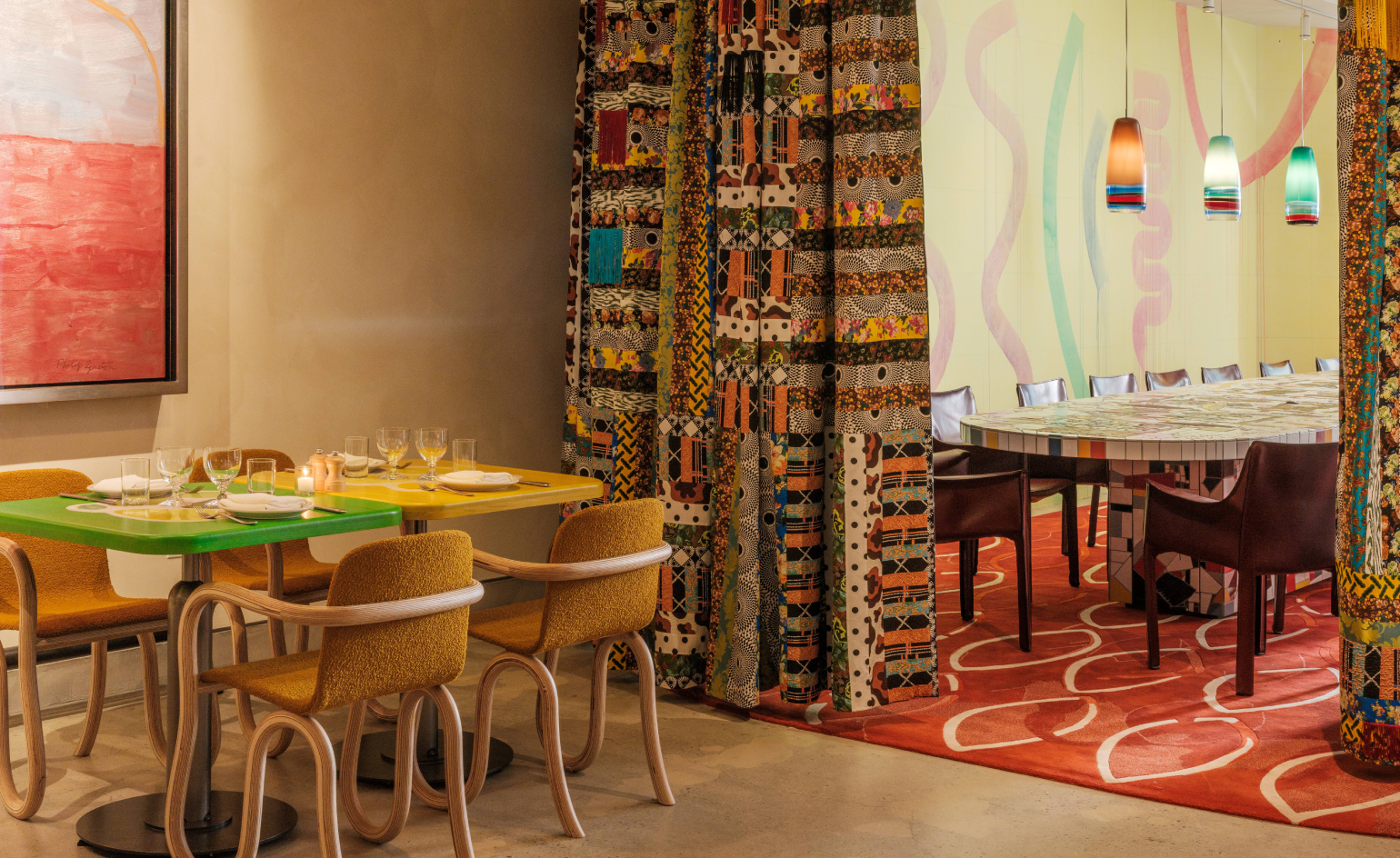
In New York’s SoHo, at the intersection of Prince and Wooster, artist Gordon Matta-Clark’s legendary 1970s restaurant Food allowed the neighbourhood’s artistic community to come together to eat, work and experiment. The co-founders of global gallery Hauser & Wirth, Iwan and Manuela Wirth are now resurrecting this ethos just across the street at the latest restaurant from their hospitality company Artfarm – it’s the second to be called Manuela, following in the footsteps of the first, in LA. ‘While Manuela is quite a different restaurant to Food, we share the same spirit and belief that art and food can act as catalysts to cultivate community and connection,’ says Artfarm’s CEO Bee Emmott.
Inside Manuela’s artful ode to contemporary dining
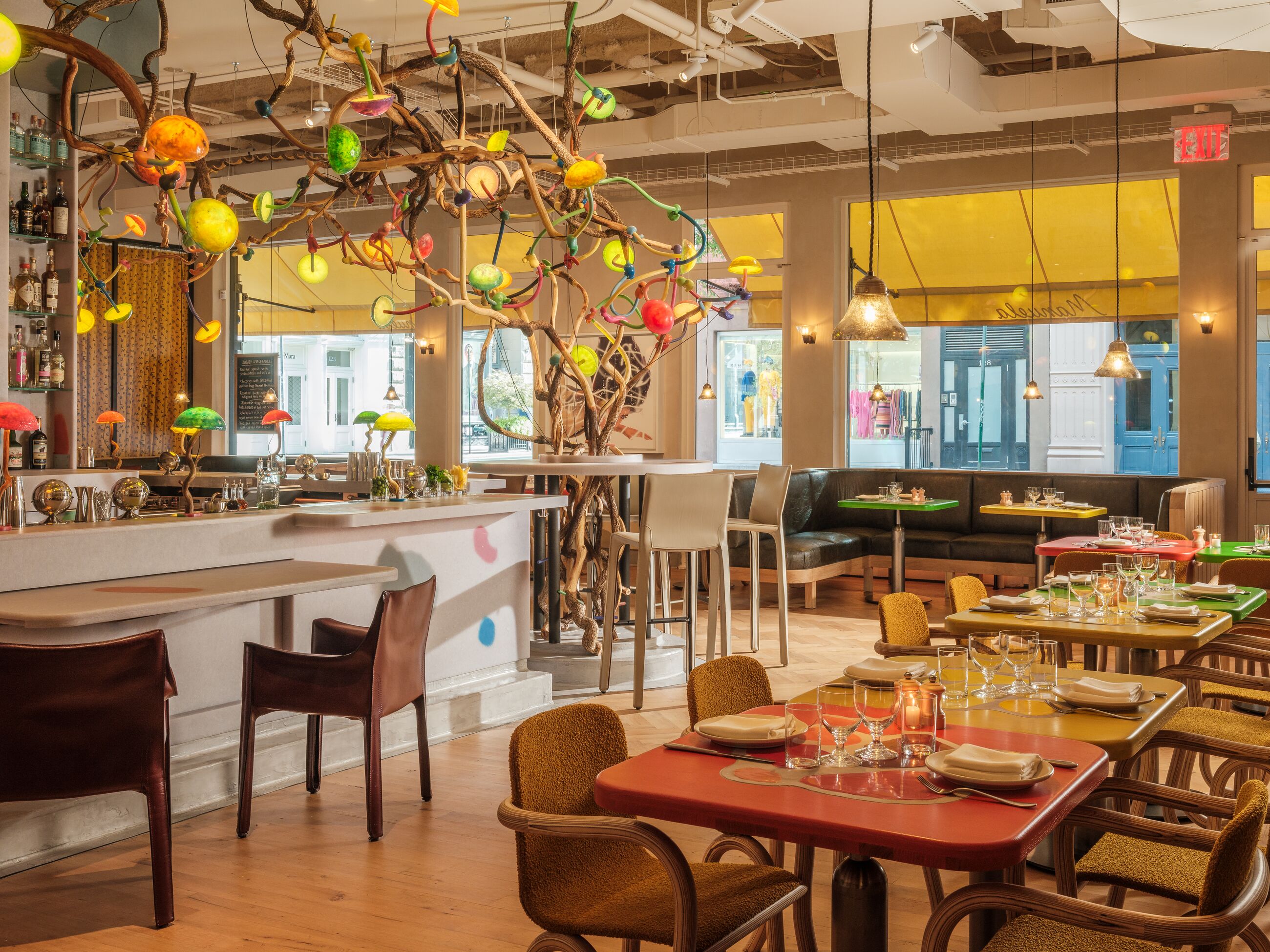
The bar at Manuela
The New York outpost offers a seasonal American menu, of which half is plant-focused, and all is freshly prepared using the open kitchen’s wood-fired grill or charcoal oven. The space features more than 45 artworks, including seven site-specific ones by Hauser & Wirth artists, each with a connection to New York. ‘Many of these are functional works,’ says Emmott, referring to a bar and chandelier by Mika Rottenberg, and a 7m-long table by Rashid Johnson.
Two spaces were combined to create the restaurant, resulting in a generous footprint. To craft a unique aesthetic that honours the neighbourhood’s history, and ties together the artworks, the Artfarm team looked to British interior designer Russell Sage, who is a long-standing collaborator. ‘My job was to create both a backdrop and a support system for the artists so that there’s a real sense of balance in the space,’ says Sage of his raw, industrial-influenced approach to the restaurant’s interiors.
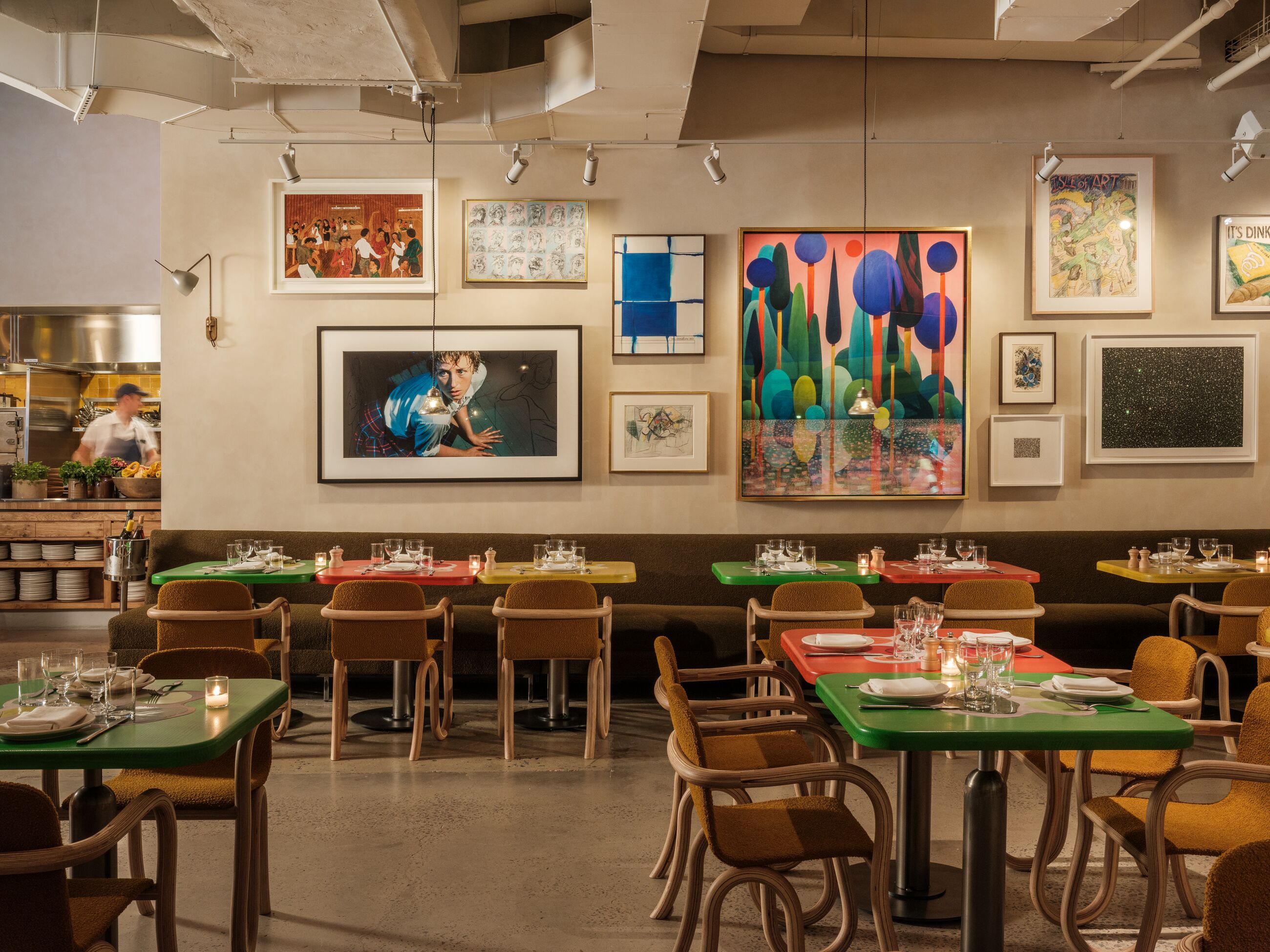
Main dining room interior
Sage has a background in fashion and his shows were a regular highlight of London Fashion Week in the early 2000s. His flair for colour, print and dramatic details translates seamlessly into interiors, which have been his primary focus for the past two decades. ‘One of the things I didn’t like about fashion was its disposability and how fast things turn around,’ says Sage, who has applied his knowledge and passion for eco-friendly textiles – from pineapple leather to repurposed off-cuts from the clothing industry – throughout Manuela in the form of curtains, banquette upholstery and more.
Incorporating recycled and sustainable materials was a shared driver both for Sage and the Wirths. To that end, Rottenberg’s sculptural bar is moulded entirely from plastic waste sourced from around New York, coupled with a chandelier woven from the invasive bittersweet vines that grow near her upstate New York studio – these burst through the splodgy-patterned counter, sprouting illuminated mushroom-like orbs, which are also formed from reused plastics. ‘This whimsical and wildly colourful work sets the tone of the space,’ says Emmott.
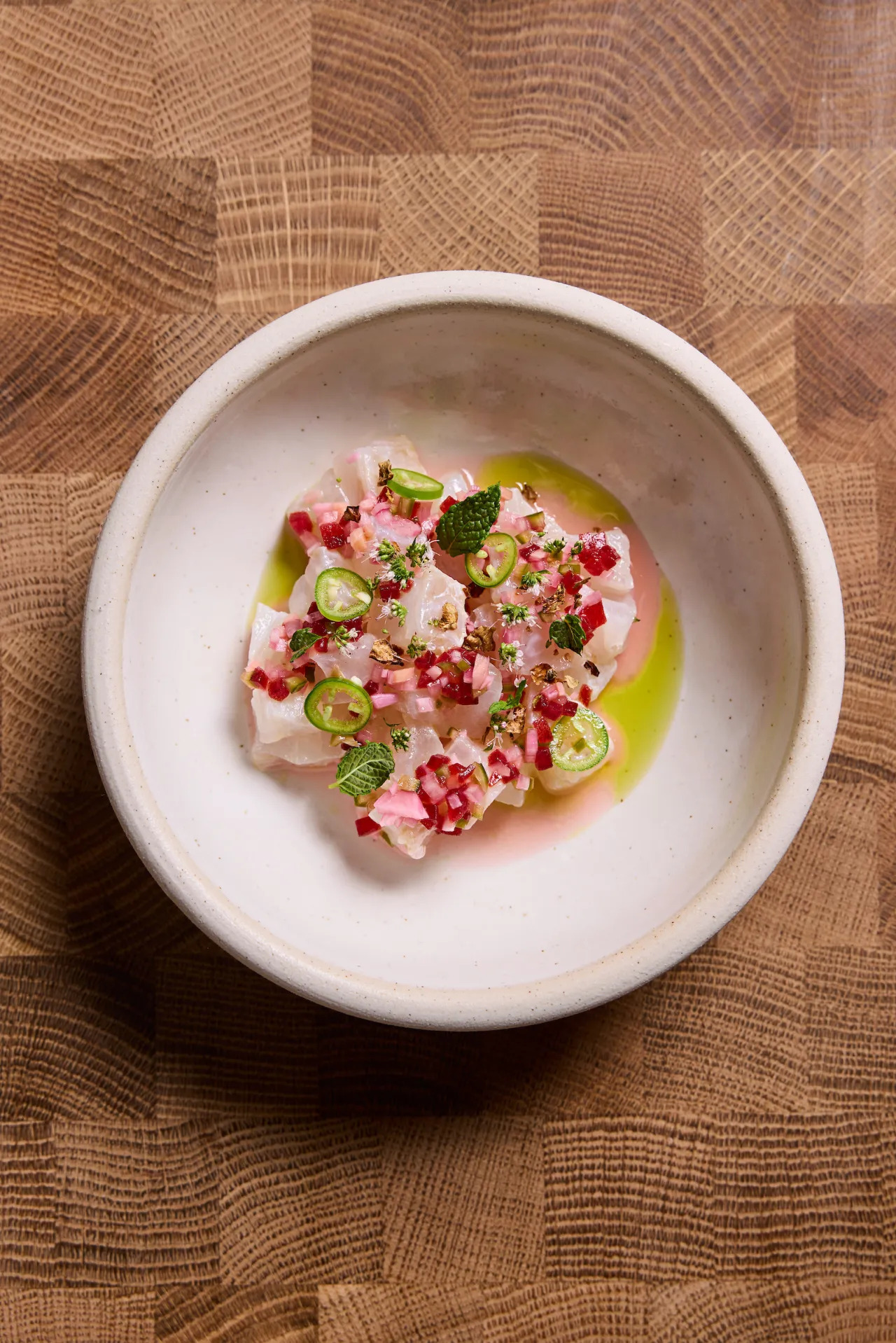
Long Island fluke crudo with pickled mandarinquat and mint
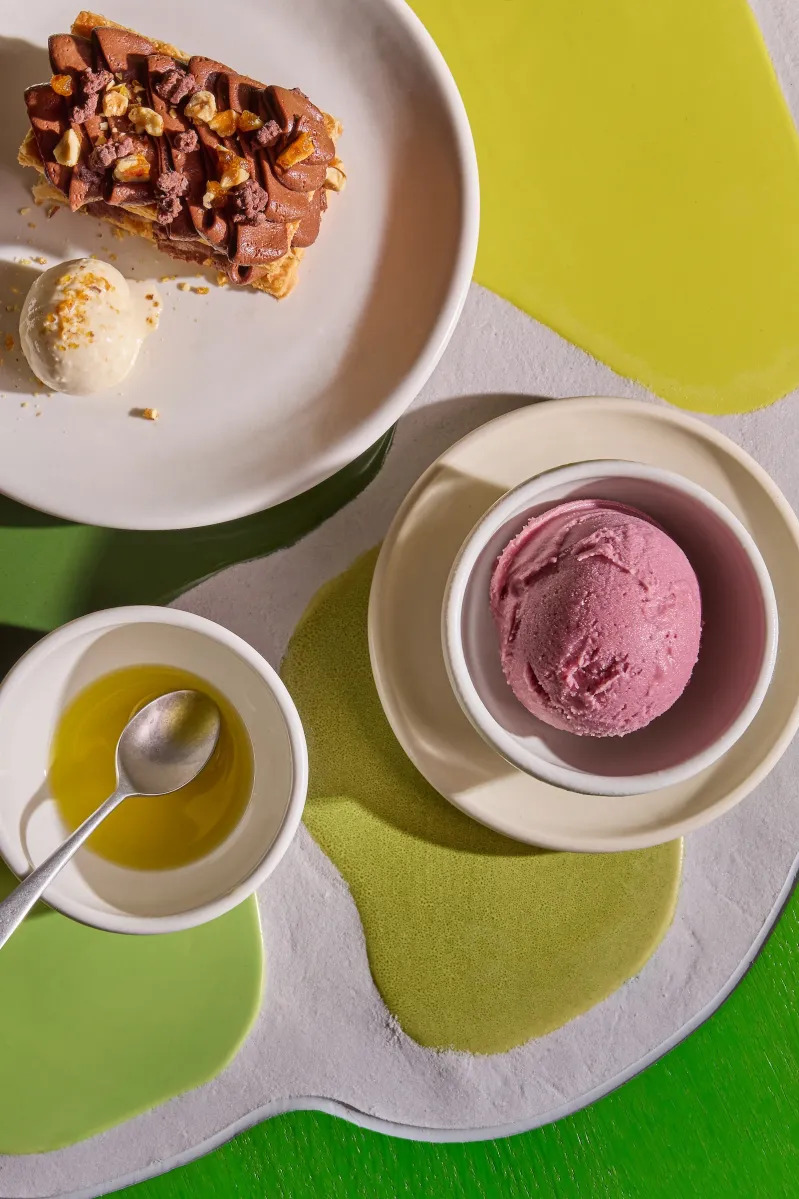
Chocolate mousse mille-feuille with crystallised cocoa nibs and hazelnut praline
Another important element of the project was fostering community, both among artists and local initiatives. Early on, the team partnered with Project Eats, an enterprise that transforms vacant urban plots and rooftops into spaces for growing food. This resulted in the installation of an in-house composter in Manuela’s kitchen (the waste from which is used in Project Eats gardens), and there is also an option for diners to add a donation to Project Eats to their bill.
To encourage interaction between guests, Manuela is designed to feel more elevated canteen than high-end restaurant, so there’s no hierarchy or best seats in the house. ‘We want people to ask questions and to chat,’ says Sage. ‘We want to provoke conversation.’
Wallpaper* Newsletter
Receive our daily digest of inspiration, escapism and design stories from around the world direct to your inbox.
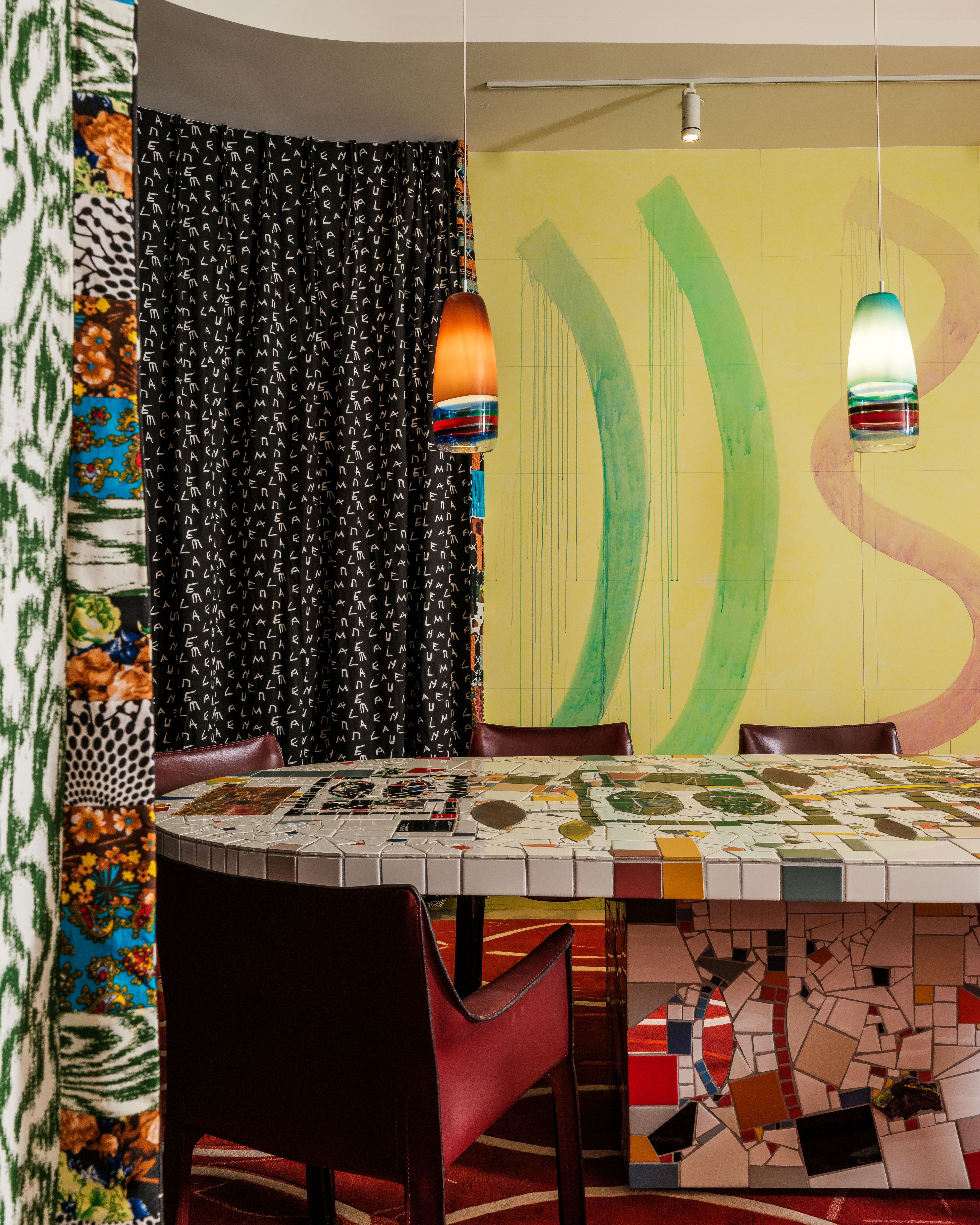
Private dining room
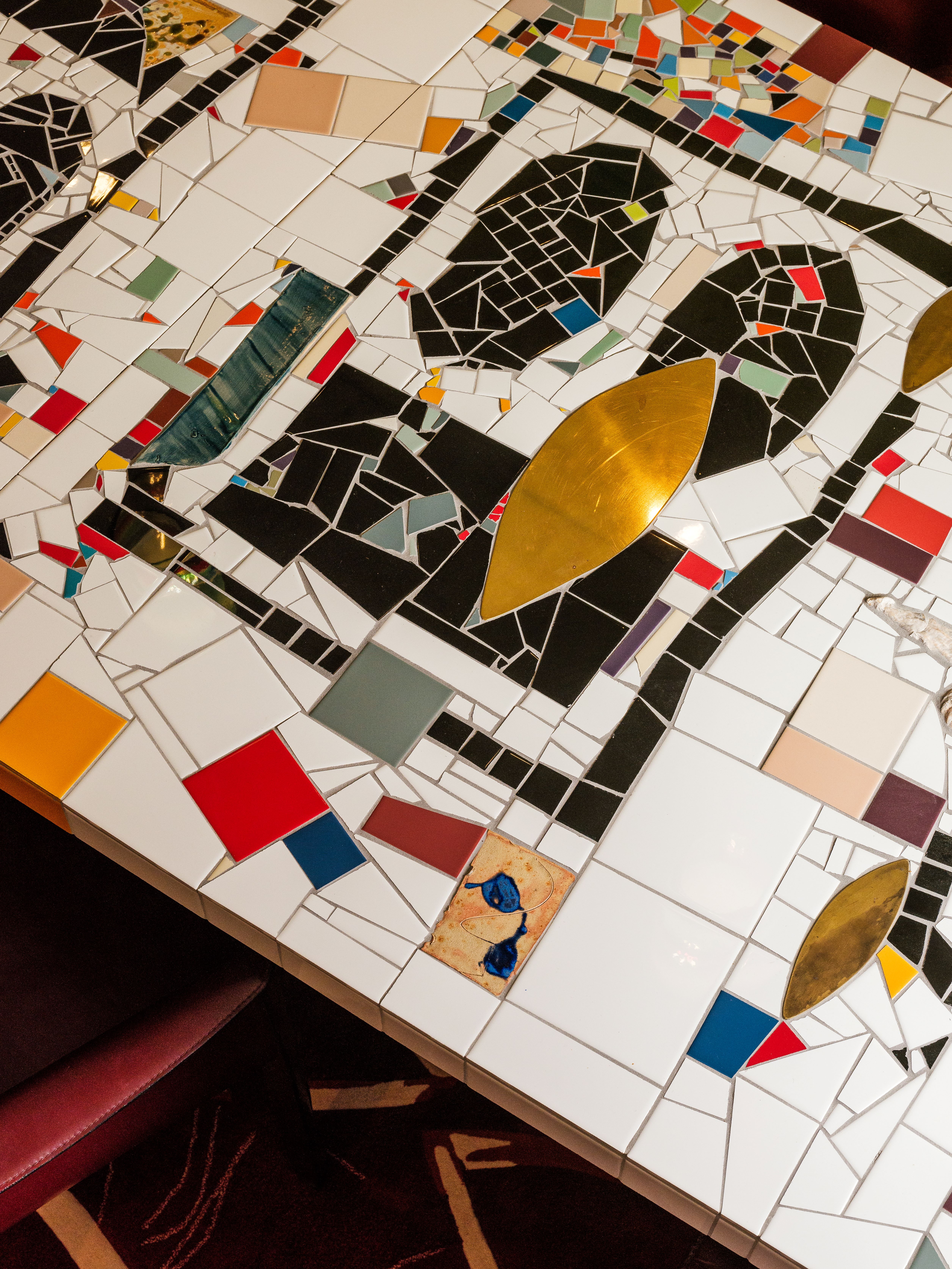
There is a private dining room, but rather than separating it from the ‘energy of the restaurant’, a clashing patchwork curtain was installed to form a fluid boundary between the two. An intentional gap in the fabric panels offers glimpses inside, where Johnson’s magnificent dining table takes pride of place. ‘What I love about Rashid’s table is that it’s pure him,’ says Sage, who had to reinforce the floor to carry its weight, and remove the shopfront to get it inside the building.
The opportunity to dine among these and other works from the Hauser & Wirth collection – by the likes of Louise Bourgeois, Cindy Sherman, George Condo and Jenny Holzer – adds to the draw of a space that champions sustainability, celebrates local artists and cultivates community in the same way that Food did. Sage’s bold interiors and the boundary-pushing contributions of each artist ensure that Manuela is a contemporary manifestation of the idea that art and food can, and should, bring people together.
Manuela is located at 130 Prince St, New York, NY 10012, United States; manuela-nyc.com.
A version of this article appears in the March 2025 issue of Wallpaper*, available in print on international newsstands, on the Wallpaper* app on Apple iOS, and to subscribers of Apple News +. Subscribe to Wallpaper* today.
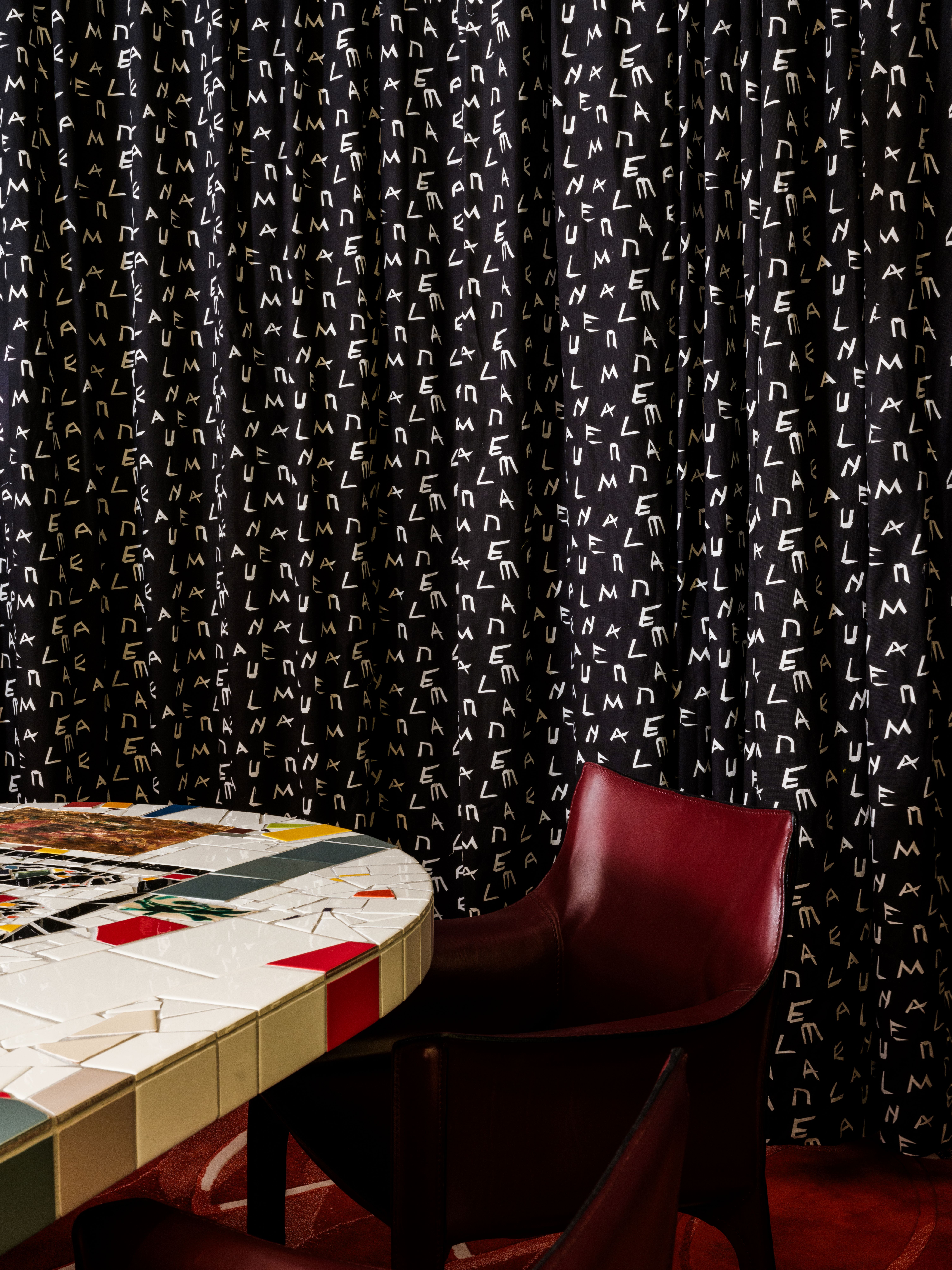
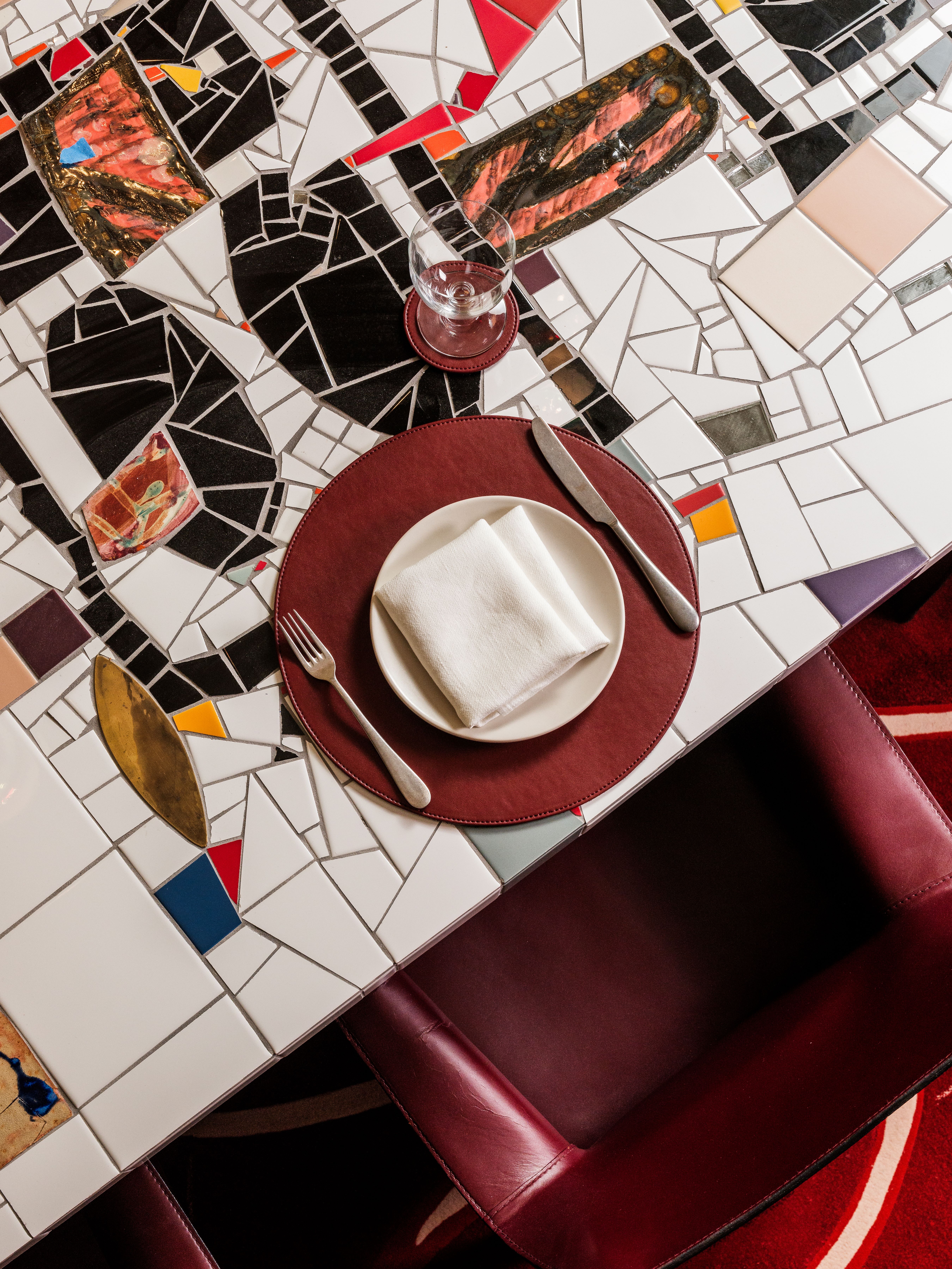
Dan Howarth is a British design and lifestyle writer, editor, and consultant based in New York City. He works as an editorial, branding, and communications advisor for creative companies, with past and current clients including Kelly Wearstler, Condé Nast, and BMW Group, and he regularly writes for titles including Architectural Digest, Interior Design, Sight Unseen, and Dezeen, where he previously oversaw the online magazine’s U.S. operations. Dan has contributed to design books The House of Glam (Gestalten, 2019), Carpenters Workshop Gallery (Rizzoli, 2018), and Magdalena Keck: Pied-À-Terre (Glitterati, 2017). His writing has also featured in publications such as Departures, Farfetch, FastCompany, The Independent, and Cultured, and he curated a digital exhibition for Google Cultural Institute in 2017.
-
 Put these emerging artists on your radar
Put these emerging artists on your radarThis crop of six new talents is poised to shake up the art world. Get to know them now
By Tianna Williams
-
 Dining at Pyrá feels like a Mediterranean kiss on both cheeks
Dining at Pyrá feels like a Mediterranean kiss on both cheeksDesigned by House of Dré, this Lonsdale Road addition dishes up an enticing fusion of Greek and Spanish cooking
By Sofia de la Cruz
-
 Creased, crumpled: S/S 2025 menswear is about clothes that have ‘lived a life’
Creased, crumpled: S/S 2025 menswear is about clothes that have ‘lived a life’The S/S 2025 menswear collections see designers embrace the creased and the crumpled, conjuring a mood of laidback languor that ran through the season – captured here by photographer Steve Harnacke and stylist Nicola Neri for Wallpaper*
By Jack Moss
-
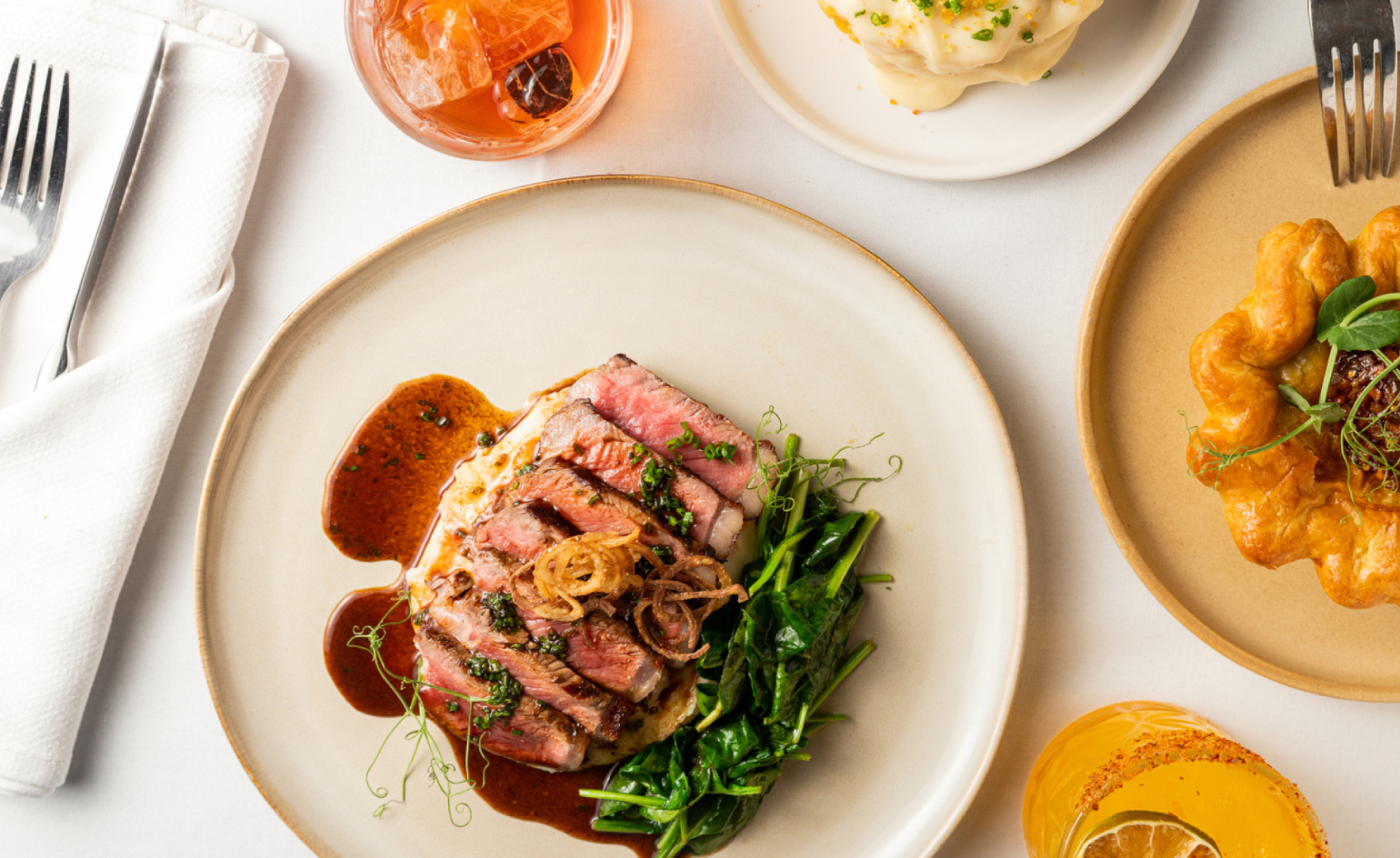 At Linden Los Angeles, classic New York comfort food gets its due
At Linden Los Angeles, classic New York comfort food gets its dueThe restaurant, inspired by a stretch of boulevard bridging Brooklyn and Queens, honors legacy, community and pleasure
By Carole Dixon
-
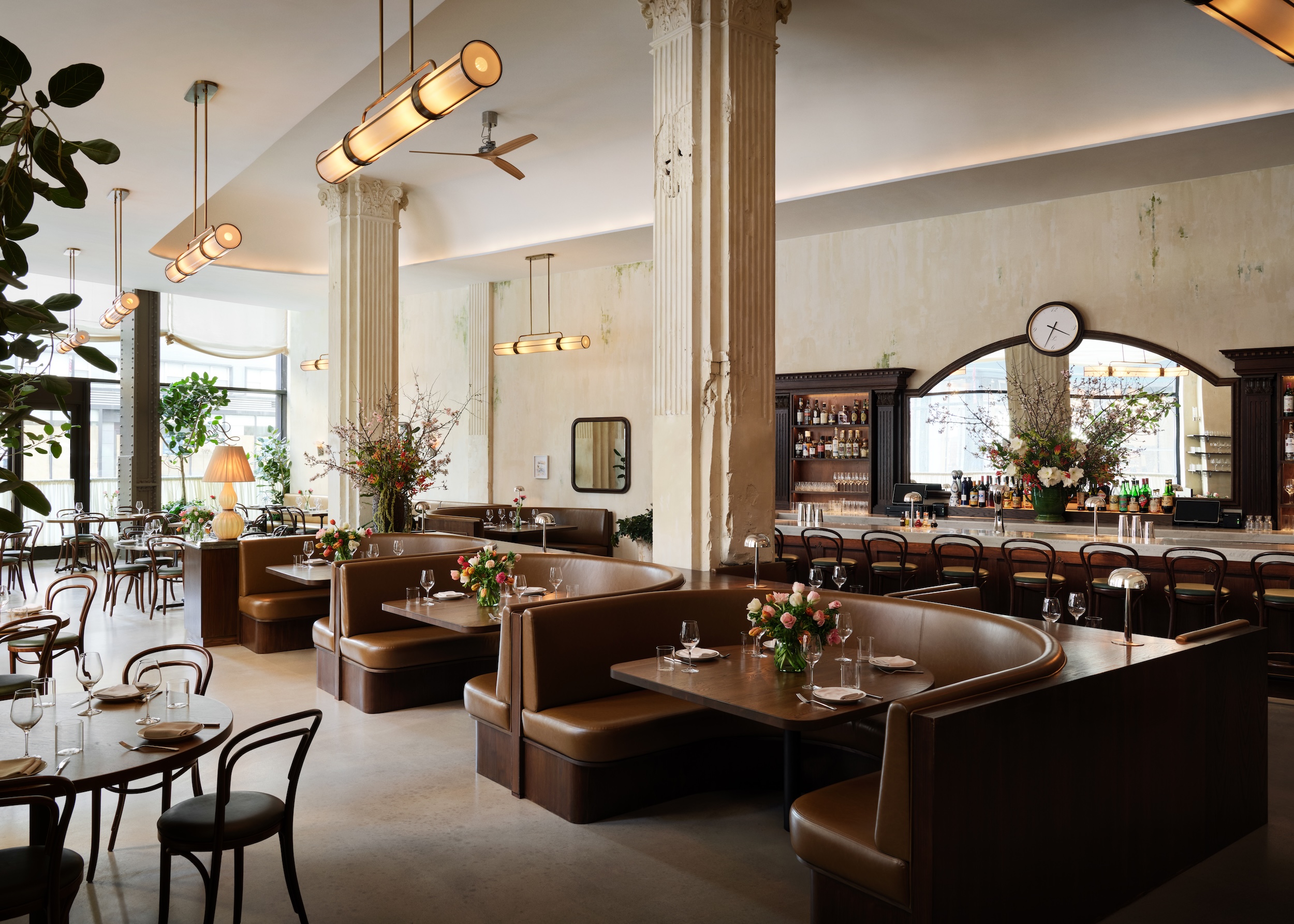 This atmospheric New York restaurant was designed to be a ‘beautiful ruin’
This atmospheric New York restaurant was designed to be a ‘beautiful ruin’At Leon’s, classic Italian fare comes with a North African accent and with a side of family history
By Anna Fixsen
-
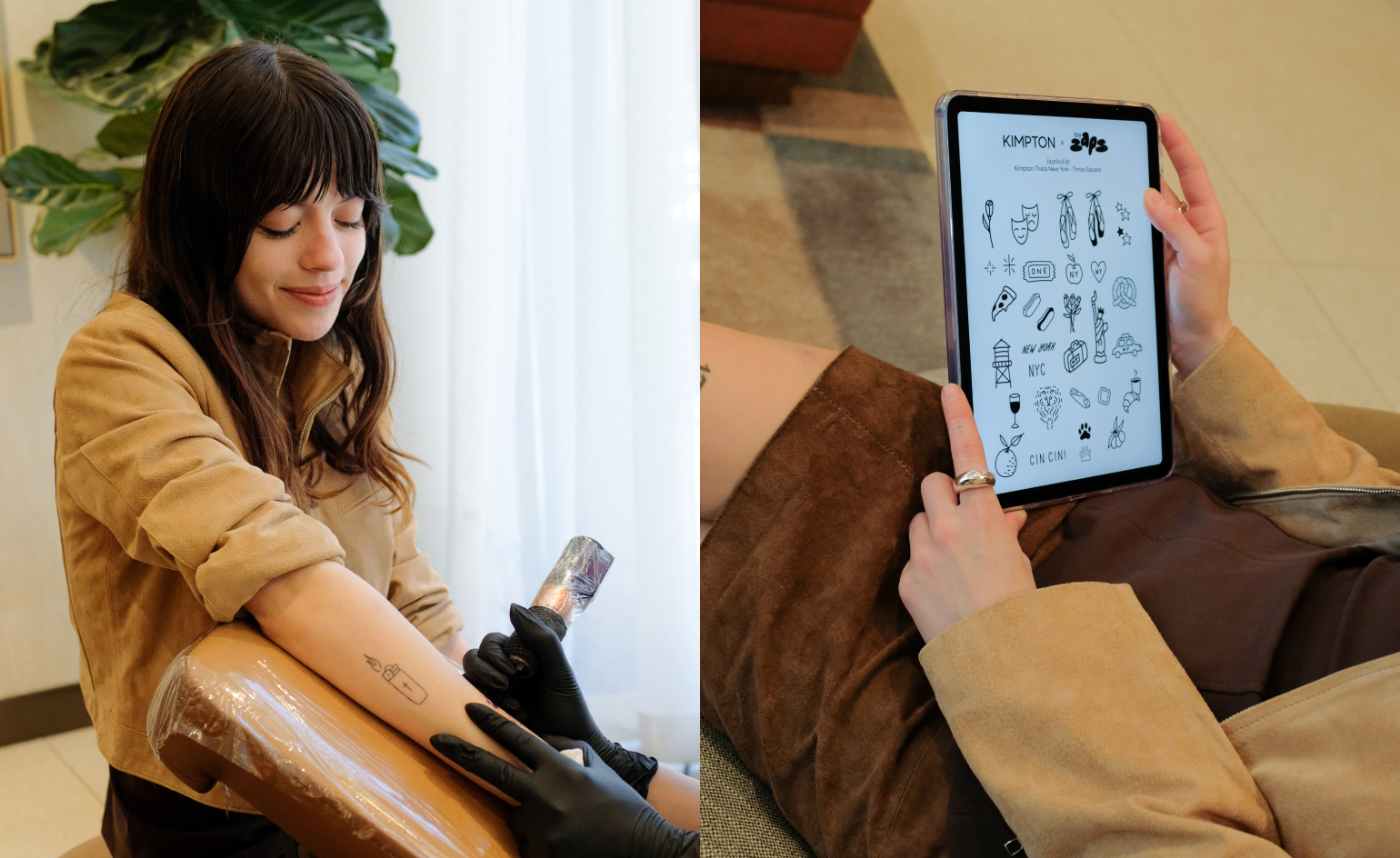 Is a tiny tattoo the best holiday souvenir? Kimpton Hotels think so
Is a tiny tattoo the best holiday souvenir? Kimpton Hotels think soIn partnership with Tiny Zaps, Kimpton Hotels is bringing city-inspired tattoo pop-ups to five U.S. locations
By Sofia de la Cruz
-
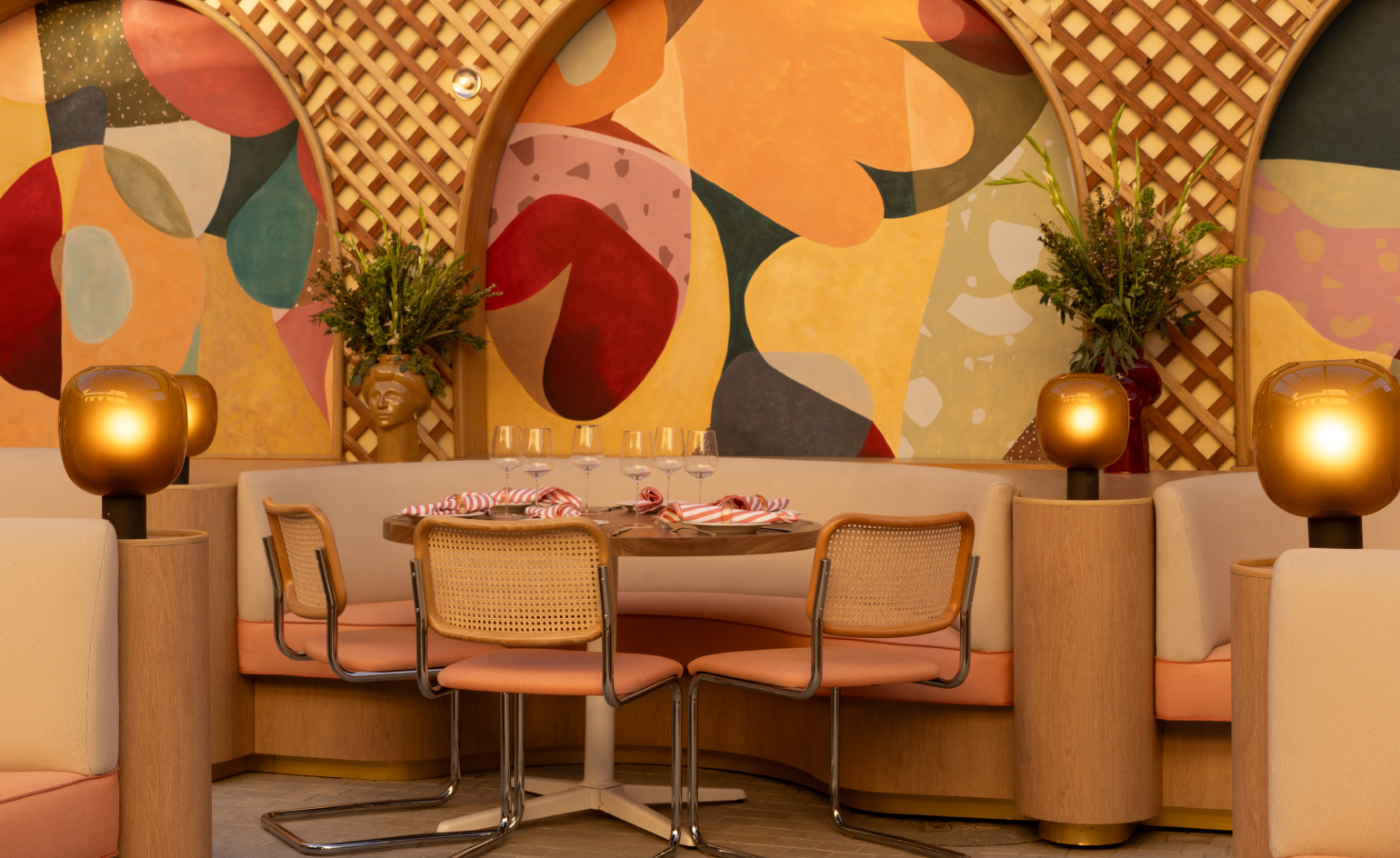 Alba Los Angeles is an Italian vacation disguised as a restaurant
Alba Los Angeles is an Italian vacation disguised as a restaurantThis buzzy NYC import brings a slice of la dolce vita to West Hollywood
By Carole Dixon
-
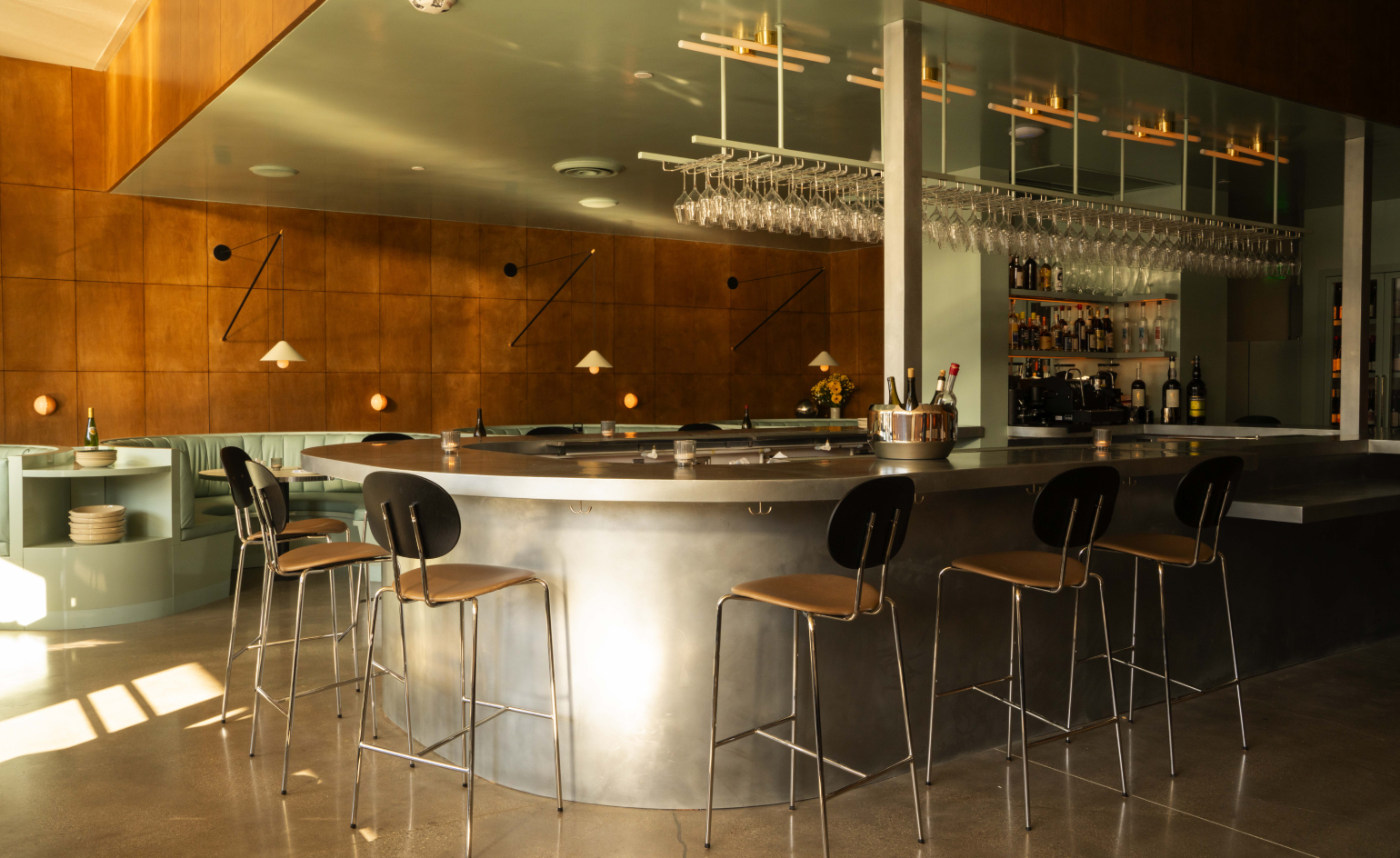 At Bar Etoile, Scandi-chic meets leisurely Los Angeles
At Bar Etoile, Scandi-chic meets leisurely Los AngelesThis new Melrose Park joint mixes art-world references, French bistro vibes and an out-of-this-world martini
By Carole Dixon
-
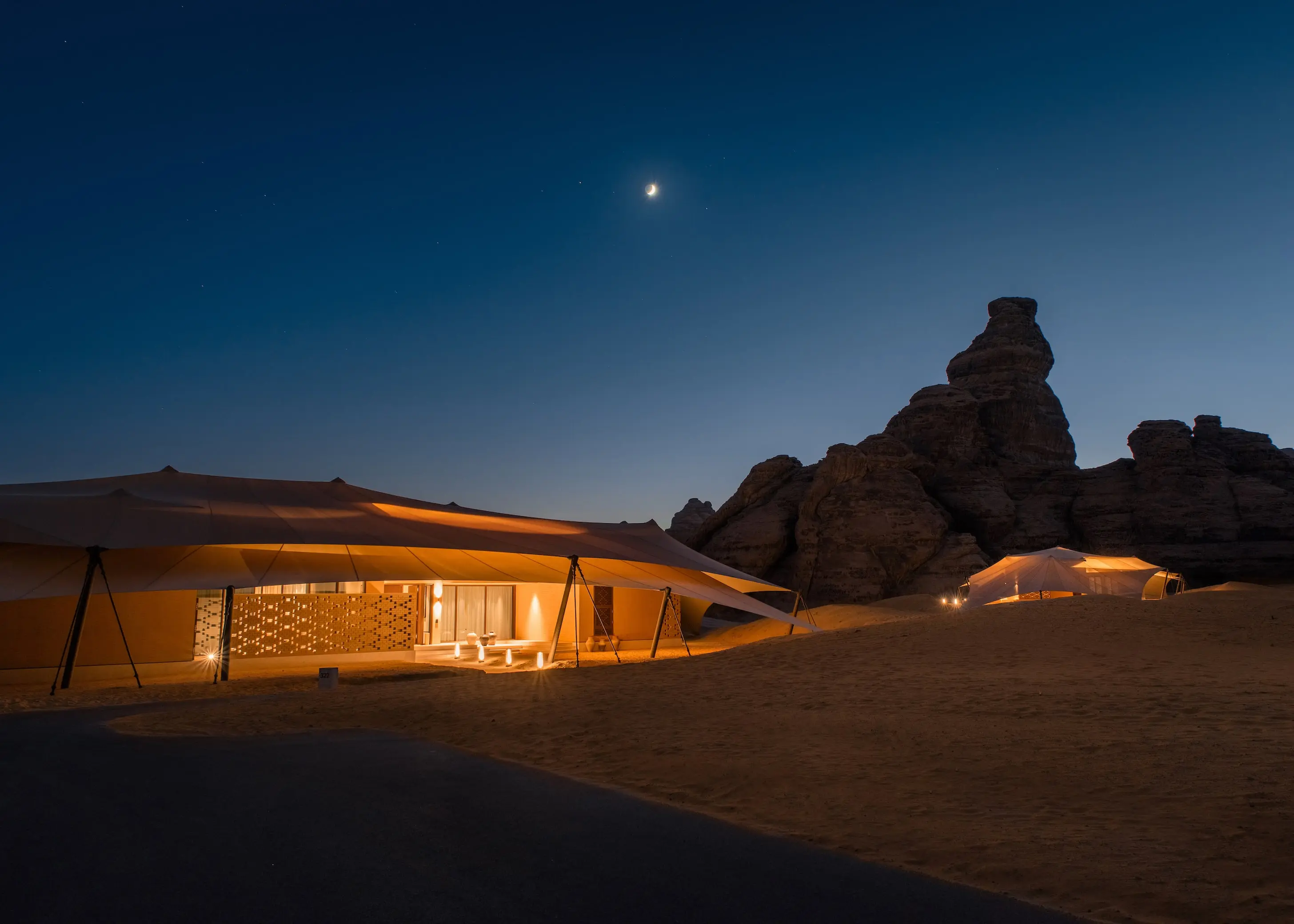 The world's most heavenly destinations for astrotourism in 2025
The world's most heavenly destinations for astrotourism in 2025We're in for a big year for celestial events. These are the world's best hotels to see the cosmos as you've never seen it before
By Anna Solomon
-
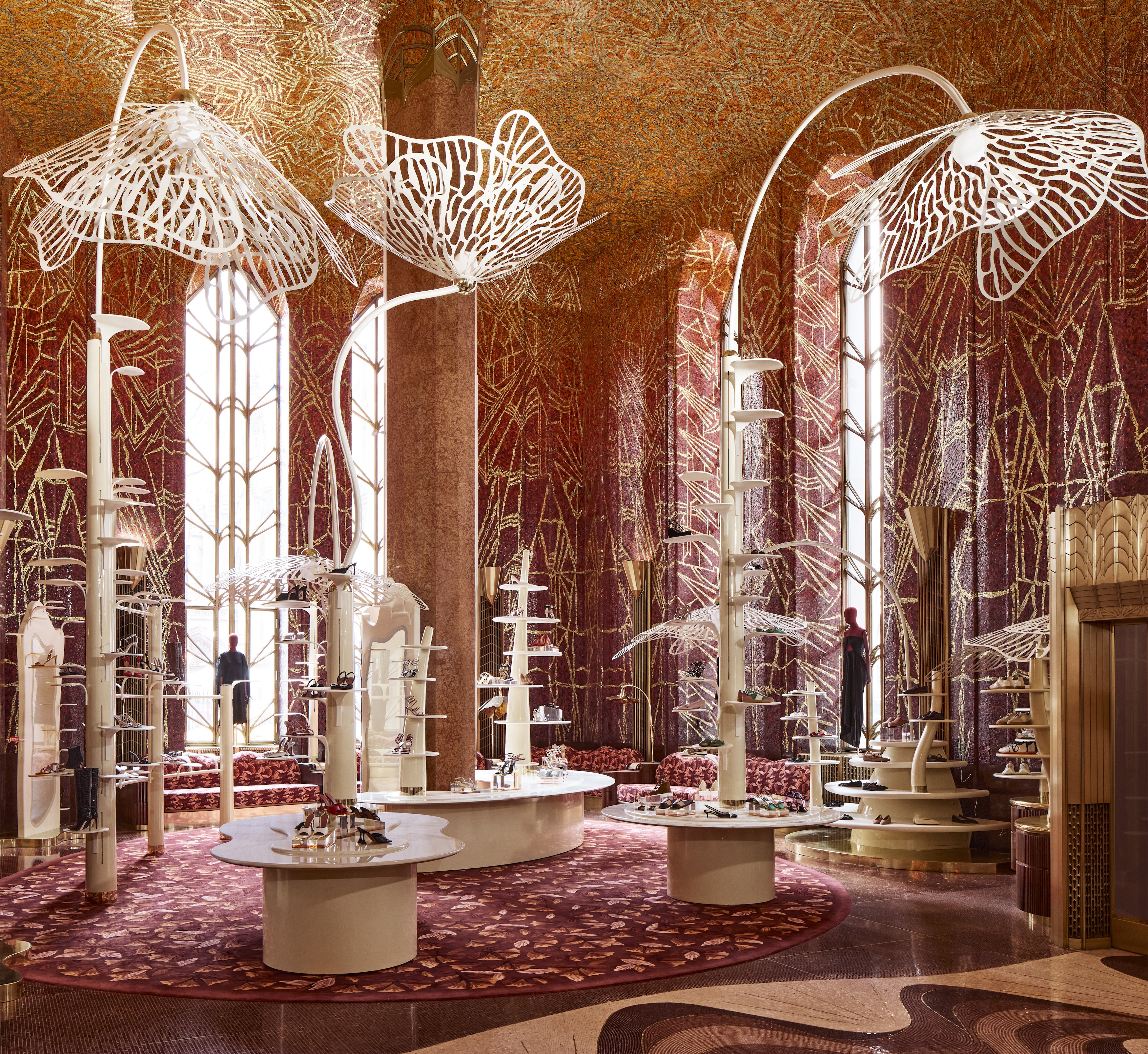 Printemps' New York outpost blooms with possibility – and enchanting design
Printemps' New York outpost blooms with possibility – and enchanting designThanks to designer Laura Gonzalez, this new retail mecca blooms colour, atmosphere and narrative
By Anna Fixsen
-
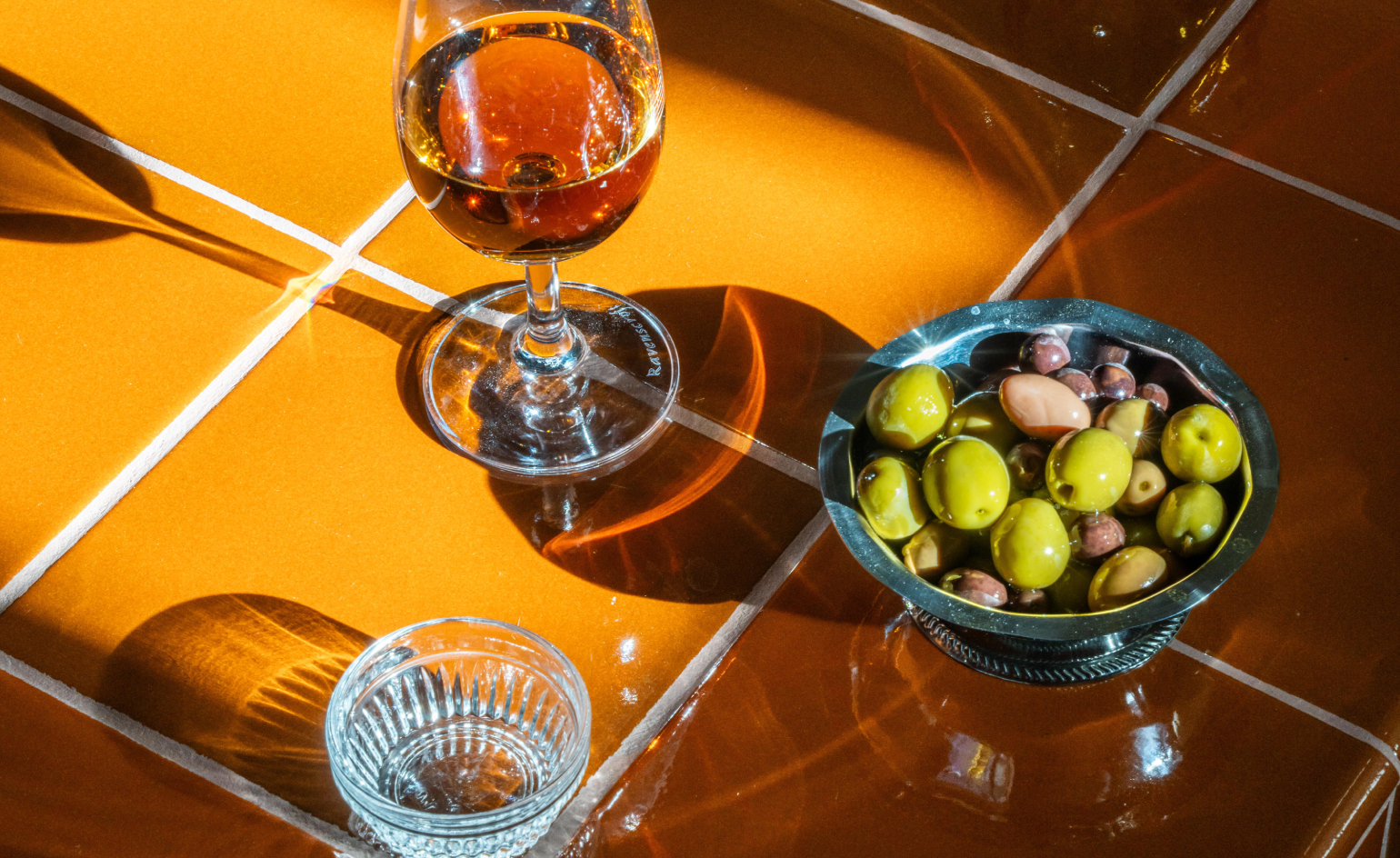 At Bar Siesta in Los Angeles, meals linger and moods perk up
At Bar Siesta in Los Angeles, meals linger and moods perk upThis new Silver Lake hotspot showcases Spain's design, culture, and delectable tinned fish
By Carole Dixon